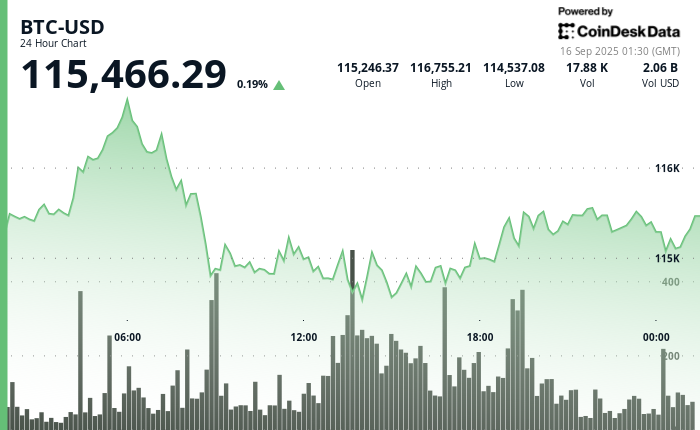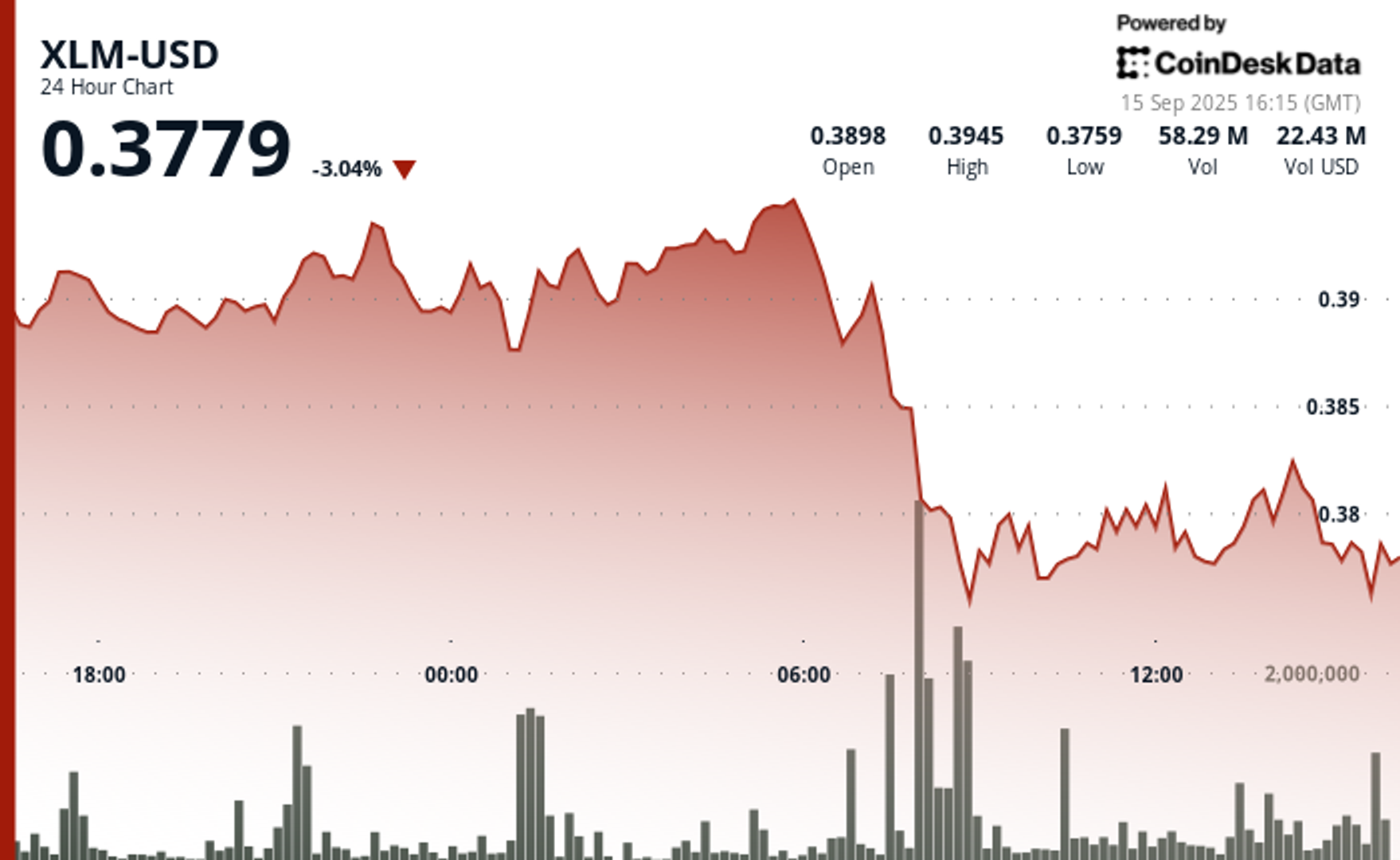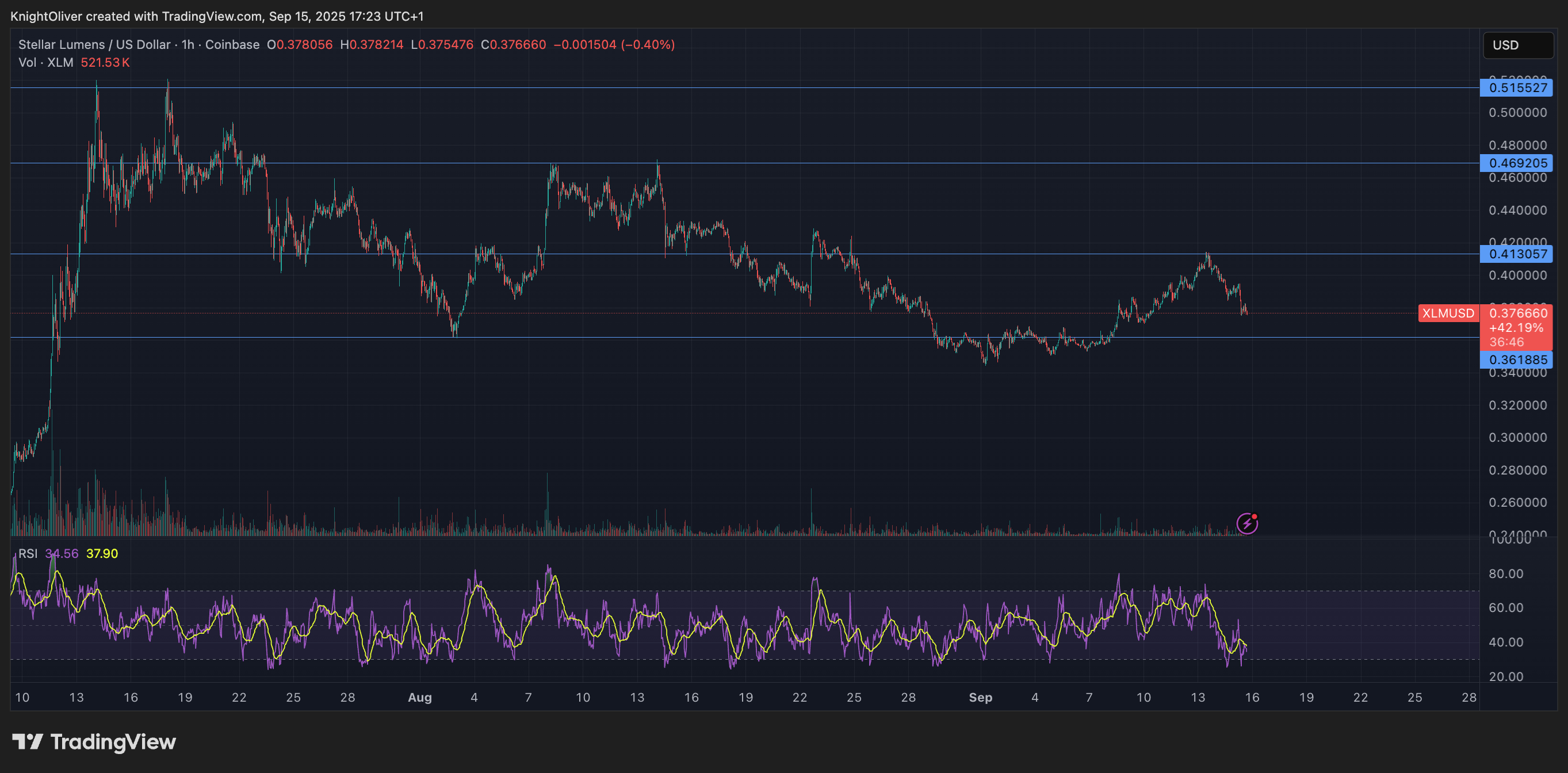Uncategorized
Why Binance Employees Are Remote-First

Five years after COVID-19 sparked a global remote-work revolution, the pendulum seems to be swinging back. Some of the very companies that once embraced remote work, like Amazon and X (formerly Twitter) are now asking employees to return to the office. For many, this makes sense. These organizations were conceived as “in-person” enterprises, with workflows and cultures built around physical proximity. Remote work was a necessary adaptation during a global crisis, but for some, its efficiencies may not justify a permanent transition.
Remote-first is not a temporary patch for us; it is our foundation as it is for many companies in the Web3 and crypto sector. From the moment Binance was established in 2017, it was designed as a global, remote-first organization, a model tailored to the demands of an industry that never sleeps. Operating in the borderless world of crypto, where markets function 24/7 and our users span every corner of the globe, a remote-first model is not just reasonable – it’s essential.
My belief is that, over time, remote-first work will not remain a niche strategy. As industries evolve and talent dynamics shift, this model will become dominant. Companies that are now forcing employees back into offices will eventually find themselves adapting to this new reality – once again.
Building a Remote-First Organization
Cryptocurrency is inherently global and decentralized. The crypto and Web3 industry operate around the clock, with no single geographic or temporal center. Binance’s remote-first model aligns perfectly with these demands, enabling us to serve users in over 100 countries without the overhead of maintaining sprawling physical offices. Our entire workforce of more than 5,000 employees working from nearly 100 countries are remote first. A study by Stanford University revealed that remote work increases productivity by 13 percent while reducing turnover rates and organizations save an average of $11,000 annually per employee by adopting remote-first models with reduced office costs and increased efficiency.
This approach maximizes efficiency, allowing us to operate lean and agile while empowering our teams with the autonomy to deliver exceptional results.
We also provide hybrid work in jurisdictions where we hold regulatory approvals and have a physical presence in places like Dubai and Paris, allowing us to have hubs for collaboration and regulatory engagement without compromising on the benefits of a distributed workforce. And, balancing global operations with local nuances that ensure us to adhere to jurisdictional requirements seamlessly and maintaining a physical presence where required.
Efficiency does not come automatically in a remote-first setup. It requires deliberate systems, strong culture, and the right tools. At Binance, we place immense emphasis on hiring the right people: self-driven individuals who thrive in a fast-paced, decentralized environment. We provide them with the tools and resources to succeed, whether it’s cutting-edge collaboration platforms or flexible budgets to execute their goals.
Maintaining a cohesive culture across a distributed workforce is perhaps the biggest challenge, but it is also where Binance excels. We foster a shared culture built on user focus, mutual respect, direct communication, and a shared commitment to innovation. Regardless of where an employee is based, they are united by our principles: no discrimination, strong user-centricity, and a relentless drive to push boundaries. Technology plays a key role here, allowing us to maintain seamless communication and collaboration across time zones.
Of course, challenges remain. Time-zone differences can complicate synchronous collaboration, and fostering a sense of belonging in a fully remote environment requires intentional effort. To address these, we fine-tune asynchronous workflows, invest in robust team-building initiatives, and create opportunities for employees to connect virtually and in-person where possible.
Not for Everyone, But the Right Fit for Many
While remote-first is central to Binance’s success, it is not a one-size-fits-all solution. It works best for industries and organizations that value agility, creativity and global reach. For traditional industries with deeply entrenched in-office processes, or for companies whose cultures were shaped by decades of physical collaboration, a full pivot to remote work may not be feasible – at least, not yet.
Even within the tech sector, there are notable differences. Companies like Amazon that once epitomized innovation have settled into more rigid structures over time, requiring employees to work in the office three days a week and increasing that to five by 2025 while monitoring their in office days, prioritizing control over flexibility. For these organizations, reverting to an office-based model may seem logical. But I believe this approach overlooks the broader trends shaping the future of work.
Remote-first work demands a certain type of talent: creative thinkers, self-motivated individuals, and those who thrive on autonomy. It also requires organizations to embrace a culture of trust and accountability. Not every company, or every employee, is prepared for this level of independence but the rewards are immense: access to a global talent pool, unparalleled flexibility, and the ability to move at the speed of innovation.
Why Remote is the Future
The world is becoming increasingly digital, with services and products tailored to distributed geographies and diverse demographics. This shift is mirrored in how people live, work, and perceive freedom. The traditional model of commuting to a central office five days a week is becoming a poor fit for this new reality.
Workforces are also becoming more global. The best talent can come from anywhere, and companies that wish to attract and retain this talent must offer flexibility. Remote-first organizations like Binance demonstrate the effectiveness of this model, creating competitive pressure on traditional firms to adapt. As companies compete for top-tier talent, those clinging to old models risk being left behind.
AI will also play a transformative role. As automation takes over repetitive tasks, the workforce will increasingly consist of high-level thinkers – creative, strategic, and analytical individuals. These workers value autonomy and flexibility, and remote-first models cater to their preferences. Companies that embrace this shift will be better positioned to thrive in the evolving landscape of work.
That said, remote-first does not mean abandoning physical interaction entirely. Hybrid models – combining the benefits of remote work with periodic in-person or virtual collaboration – offer a promising middle ground. At Binance, we have periodic virtual team building events, virtual and in person fun clubs with some teams having regular offsites and our local teams gathering regularly, notably in regions where we hold regulatory approvals. They provide the flexibility employees crave while preserving the human connections that enhance creativity and teamwork.
Pioneering the Future of Work
Of course, remote-first work is not universal. Certain professions, like healthcare, manufacturing, and others that rely on physical presence – will always require on-site operations. But for many white-collar roles, the potential for remote work is immense. The shift will be gradual, likely taking decades, but it is inevitable.
Binance is proud to be at the forefront of this transition. Our remote-first model not only enables us to lead in the fast-paced world of crypto but also sets a standard for what work can look like in the future. By prioritizing flexibility, autonomy, and a global mindset, we are blazing a trail for others to follow.
As the world continues to digitize and decentralize, the companies that embrace these principles will be the ones that thrive. At Binance, we’re not just building the future of finance – we’re building the future of work. And we’re just getting started.
Uncategorized
Asia Morning Briefing: Fragility or Back on Track? BTC Holds the Line at $115K

Good Morning, Asia. Here’s what’s making news in the markets:
Welcome to Asia Morning Briefing, a daily summary of top stories during U.S. hours and an overview of market moves and analysis. For a detailed overview of U.S. markets, see CoinDesk’s Crypto Daybook Americas.
Bitcoin (BTC) traded just above $115k in Asia Tuesday morning, slipping slightly after a strong start to the week.
The modest pullback followed a run of inflows into U.S. spot ETFs and lingering optimism that the Federal Reserve will cut rates next week. The moves left traders divided: is this recovery built on fragile foundations, or is crypto firmly back on track after last week’s CPI-driven jitters?
That debate is playing out across research desks. Glassnode’s weekly pulse emphasizes fragility. While ETF inflows surged nearly 200% last week and futures open interest jumped, the underlying spot market looks weak.
Buying conviction remains shallow, Glassnode writes, funding rates have softened, and profit-taking is on the rise with more than 92% of supply in profit.
Options traders have also scaled back downside hedges, pushing volatility spreads lower, which Glassnode warns leaves the market exposed if risk returns. The core message: ETFs and futures are supporting the rally, but without stronger spot flows, BTC remains vulnerable.
QCP takes the other side.
The Singapore-based desk says crypto is “back on track” after CPI confirmed tariff-led inflation without major surprises. They highlight five consecutive days of sizeable BTC ETF inflows, ETH’s biggest inflow in two weeks, and strength in XRP and SOL even after ETF delays.
Traders, they argue, are interpreting regulatory postponements as inevitability rather than rejection. With the Altcoin Season Index at a 90-day high, QCP sees BTC consolidation above $115k as the launchpad for rotation into higher-beta assets.
The divide underscores how Bitcoin’s current range near $115k–$116k is a battleground. Glassnode calls it fragile optimism; QCP calls it momentum. Which side is right may depend on whether ETF inflows keep offsetting profit-taking in the weeks ahead.

Market Movement
BTC: Bitcoin is consolidating near the $115,000 level as traders square positions ahead of expected U.S. Fed policy moves; institutional demand via spot Bitcoin ETFs is supporting upside
ETH: ETH is trading near $4500 in a key resistance band; gains are being helped by renewed institutional demand, tightening supply (exchange outflows), and positive technical setups.
Gold: Gold continues to hold near record highs, underpinned by expectations of Fed interest rate cuts, inflation risk, and investor demand for safe havens; gains tempered somewhat by profit‑taking and a firmer U.S. dollar
Nikkei 225: Japan’s Nikkei 225 topped 45,000 for the first time Monday, leading Asia-Pacific gains as upbeat U.S.-China trade talks and a TikTok divestment framework lifted sentiment.
S&P 500: The S&P 500 rose 0.5% to close above 6,600 for the first time on Monday as upbeat U.S.-China trade talks and anticipation of a Fed meeting lifted stocks.
Elsewhere in Crypto
Uncategorized
Wall Street Bank Citigroup Sees Ether Falling to $4,300 by Year-End

Wall Street giant Citigroup (C) has launched new ether (ETH) forecasts, calling for $4,300 by year-end, which would be a decline from the current $4,515.
That’s the base case though. The bank’s full assessment is wide enough to drive an army regiment through, with the bull case being $6,400 and the bear case $2,200.
The bank analysts said network activity remains the key driver of ether’s value, but much of the recent growth has been on layer-2s, where value “pass-through” to Ethereum’s base layer is unclear.
Citi assumes just 30% of layer-2 activity contributes to ether’s valuation, putting current prices above its activity-based model, likely due to strong inflows and excitement around tokenization and stablecoins.
A layer 1 network is the base layer, or the underlying infrastructure of a blockchain. Layer 2 refers to a set of off-chain systems or separate blockchains built on top of layer 1s.
Exchange-traded fund (ETF) flows, though smaller than bitcoin’s (BTC), have a bigger price impact per dollar, but Citi expects them to remain limited given ether’s smaller market cap and lower visibility with new investors.
Macro factors are seen adding only modest support. With equities already near the bank’s S&P 500 6,600 target, the analysts do not expect major upside from risk assets.
Read more: Ether Bigger Beneficiary of Digital Asset Treasuries Than Bitcoin or Solana: StanChart
Uncategorized
XLM Sees Heavy Volatility as Institutional Selling Weighs on Price

Stellar’s XLM token endured sharp swings over the past 24 hours, tumbling 3% as institutional selling pressure dominated order books. The asset declined from $0.39 to $0.38 between September 14 at 15:00 and September 15 at 14:00, with trading volumes peaking at 101.32 million—nearly triple its 24-hour average. The heaviest liquidation struck during the morning hours of September 15, when XLM collapsed from $0.395 to $0.376 within two hours, establishing $0.395 as firm resistance while tentative support formed near $0.375.
Despite the broader downtrend, intraday action highlighted moments of resilience. From 13:15 to 14:14 on September 15, XLM staged a brief recovery, jumping from $0.378 to a session high of $0.383 before closing the hour at $0.380. Trading volume surged above 10 million units during this window, with 3.45 million changing hands in a single minute as bulls attempted to push past resistance. While sellers capped momentum, the consolidation zone around $0.380–$0.381 now represents a potential support base.
Market dynamics suggest distribution patterns consistent with institutional profit-taking. The persistent supply overhead has reinforced resistance at $0.395, where repeated rally attempts have failed, while the emergence of support near $0.375 reflects opportunistic buying during liquidation waves. For traders, the $0.375–$0.395 band has become the key battleground that will define near-term direction.

Technical Indicators
- XLM retreated 3% from $0.39 to $0.38 during the previous 24-hours from 14 September 15:00 to 15 September 14:00.
- Trading volume peaked at 101.32 million during the 08:00 hour, nearly triple the 24-hour average of 24.47 million.
- Strong resistance established around $0.395 level during morning selloff.
- Key support emerged near $0.375 where buying interest materialized.
- Price range of $0.019 representing 5% volatility between peak and trough.
- Recovery attempts reached $0.383 by 13:00 before encountering selling pressure.
- Consolidation pattern formed around $0.380-$0.381 zone suggesting new support level.
Disclaimer: Parts of this article were generated with the assistance from AI tools and reviewed by our editorial team to ensure accuracy and adherence to our standards. For more information, see CoinDesk’s full AI Policy.
-

 Business11 месяцев ago
Business11 месяцев ago3 Ways to make your business presentation more relatable
-

 Fashion11 месяцев ago
Fashion11 месяцев agoAccording to Dior Couture, this taboo fashion accessory is back
-

 Entertainment11 месяцев ago
Entertainment11 месяцев ago10 Artists who retired from music and made a comeback
-

 Entertainment11 месяцев ago
Entertainment11 месяцев ago\’Better Call Saul\’ has been renewed for a fourth season
-

 Entertainment11 месяцев ago
Entertainment11 месяцев agoNew Season 8 Walking Dead trailer flashes forward in time
-

 Business11 месяцев ago
Business11 месяцев ago15 Habits that could be hurting your business relationships
-

 Entertainment11 месяцев ago
Entertainment11 месяцев agoMeet Superman\’s grandfather in new trailer for Krypton
-

 Entertainment11 месяцев ago
Entertainment11 месяцев agoDisney\’s live-action Aladdin finally finds its stars





